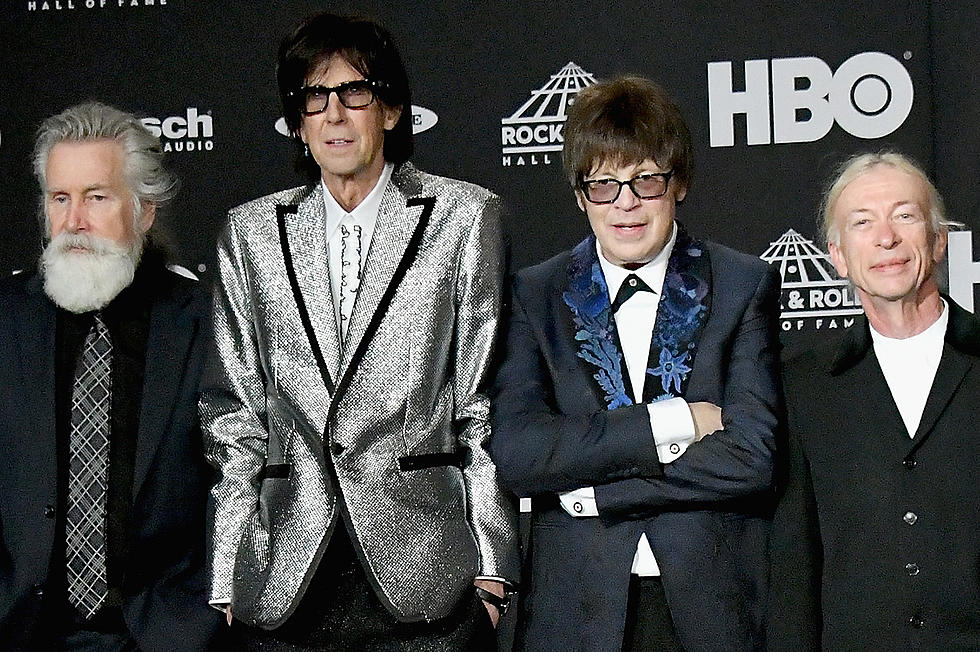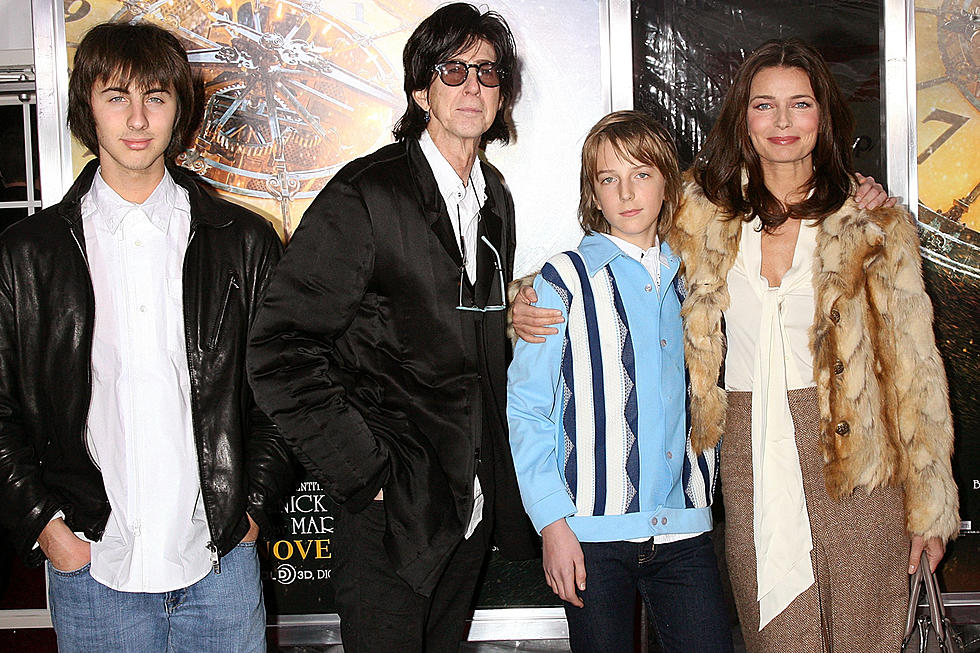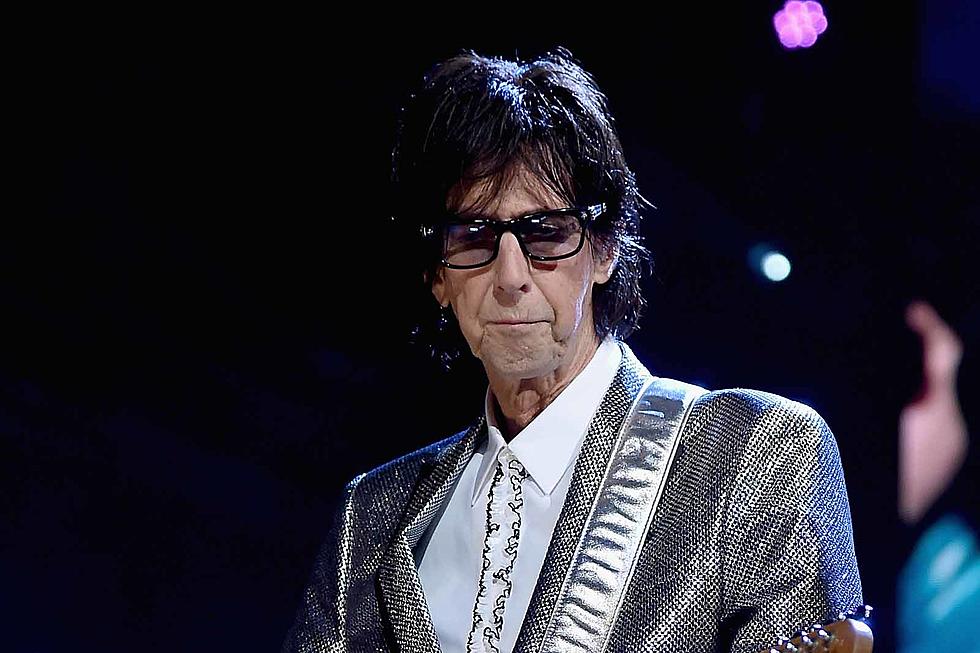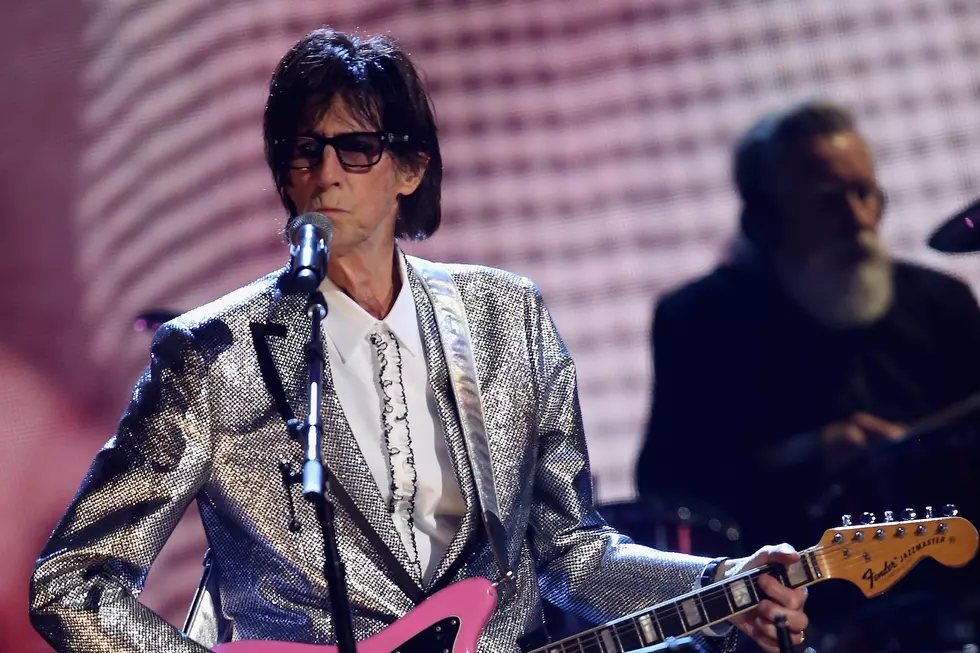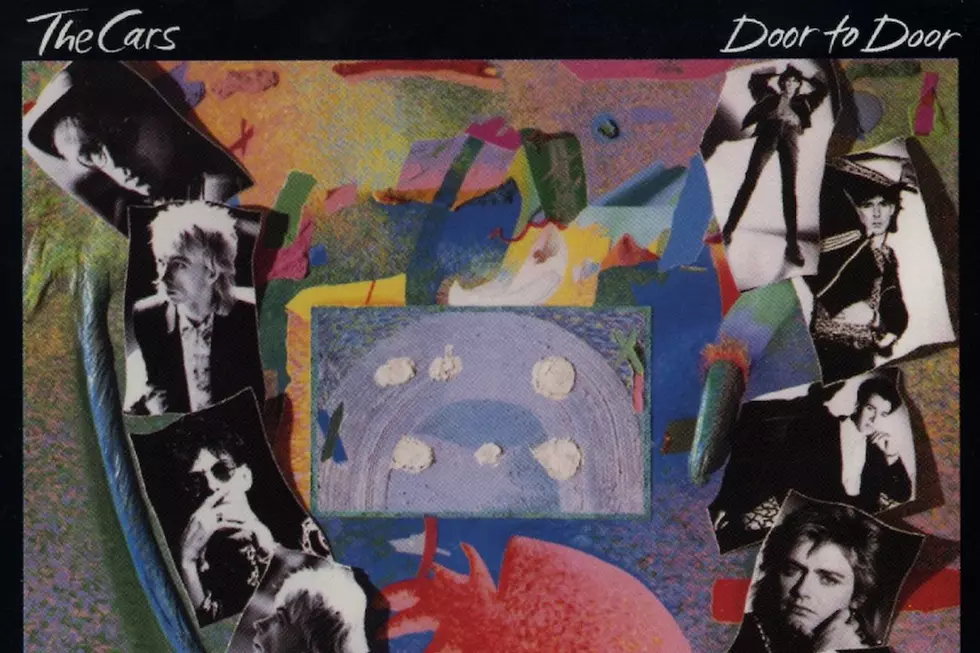
Why the Cars Ran Off the Road With ‘Door to Door’
The Cars tried to get back to basics with Door to Door, but they'd already lost the communal spark that made them superstars in the '80s.
Released on Aug. 25, 1987, it remains their only non-Top 20 album, and the last record to include the band's original quintet. Elliot Easton, Greg Hawkes, Ric Ocasek, Benjamin Orr and David Robinson had tied a best-ever finish with the No. 3 1984 smash Heartbeat City, a quadruple-platinum juggernaut.
But they'd gotten there by trading in some of the nervy attitude that defined their career-making self-titled debut for a sleek, mechanized sheen favored by producer Mutt Lange. (For example, Robinson didn't contribute any live drums to the album. All of his performances were sampled, then meticulously sequenced into the tracks later.)
The Cars vowed to do things differently on Door to Door, finishing the album in four months, where Heartbeat City had taken nine. "It's more down-to-earth and less synthesized," Ocasek told the Boston Globe in 1987. "I like things to be more in disorder than order. That's why I have reservations about computer music."
Ocasek was able to apply this approach more directly this time, after joining Hawkes in the producer's chair. "It was easy," he added. "Everybody really produced themselves. Nobody was told what to do. Basically, everybody played for themselves. I just watched the clock."
Even a determinedly retro approach, however, couldn't turn back the hands of time.
In the interim between Heartbeat City and Door to Door, the Cars had focused on individual pursuits. More than that, they'd found some measure of outside success: Ocasek released the Top 40 1986 solo album This Side of Paradise, while Elliott collaborated with Jules Shear on 1985's Change No Change and Greg Hawkes composed film scores. Orr's 1986 studio effort The Lace, co-written with longtime girlfriend Diane Grey Page, produced the No. 24 single "Stay the Night."
At the time, the Cars tried to present all of that as a strength. "You have all the band members living under the same roof when they're used to having their own space, so tell me there won't be any differences," Elliott told the Oklahoman in 1987. "We're all different, and it comes together as a heady brew, a volatile mixture – but that's responsible, I think, for a lot of the unique qualities of the band. Among ourselves, the band never ended."
Listen to the Cars Perform 'Leave or Stay'
This old-school tack led the Cars back to never-completed archival material in a similar vein. Both "Leave or Stay" and "Ta Ta Wayo Wayo" were originally demoed in 1977, then belatedly completed for Door to Door.
"Leave or Stay," which opened the album, had once been a live staple during the band's early days. "We used to open all our sets at the Rat [in Boston] with 'Leave or Stay,'" Ocasek told the Globe. "And when we were messing around the studio while making the new album, we played the song for the fun of it, and played it like it was yesterday." He also cautioned against any strict interpretations of "Ta Ta Wayo Wayo." "Those are just nonsense syllables," Ocasek added. "If you remember back, nonsense syllables were fine in 1977."
"You Are the Girl," a newly crafted Top 20 single, featured Ocasek's trademark offbeat perspective, as told through a rare paired vocal with Orr. Elsewhere, they tip their collective hats to the Beach Boys on "Wound Up in You," allow Orr a dreamy turn on "Coming Up on You" and even stir in some country twang on "Everything You Say."
"I'm happy that the pop songs have a bit of a twist," Ocasek told the New York Times in a 1987 interview. "When I'm writing, I never know how it's going to come out. I don't think, 'Well, I've done a catchy one, now I can do a weird one.' I read a lot of poetry, and that gives me a wide range of permission to say anything in a song. They're more twisted than I'll ever be."
Still, pretending the Cars arrived here unchanged didn't make it so. If anything, their attempts to recapture the glory days only intensified the sense that Door to Door was a last hurrah. “It was pretty easy to see why we stopped," Hawkes told the Toronto Star in 2011. "A lot of the band members weren't getting along at the time. I know that Ric and Ben weren't getting along — and I still don't exactly know why."
For one thing, the singers had a disagreement over composing the album. Orr apparently wanted to include Page in the writing process again, to which Ocasek said, "That's not gonna happen." More distressingly, Orr "was drinking a little much," Ocasek told Rolling Stone in 2011.
Watch the Cars Perform 'You Are the Girl'
Orr ended up riding on a separate tour bus, barely speaking to Ocasek – despite having worked with him since the '60s. It seemed the Cars had nowhere to go but down, and that's just what happened.
Some essential thing, perhaps simply a sense of camaraderie, was now missing. After five straight hits, including four multi-platinum Top 10 smashes, Door to Door could get no higher than No. 26 on the Billboard chart. Their hearts may have initially been in the right place, but the album was fatally flawed. "Maybe we had exhausted what we could do at the time," Hawkes told the Toronto Star. "We just naturally needed a break from each other."
Ocasek insisted that it all happened at the right time, despite the fact that neither he nor Orr ever managed another Top 40 solo hit. "I know that I didn't care," he confided to Rolling Stone. "We left on a high point, and that's it."
Orr died of pancreatic cancer before the Cars attempted any sort of reunion. Easton and Hawkes subsequently formed the New Cars in 2005 with Todd Rundgren and other members of Rundgren's solo band. Then, six years later, all four surviving co-founders of the Cars returned for the well-received Move Like This.
They notably refused to replace Orr. Instead, Hawkes and co-producer Jacknife Lee handled bass duties during the sessions; Hawkes took over for the subsequent live dates. An honorable misstep, but a misstep nevertheless, Door to Door remains the Cars' final statement as a fivesome.
See the Cars Among Rock's Sexiest Album Covers
More From Ultimate Classic Rock



